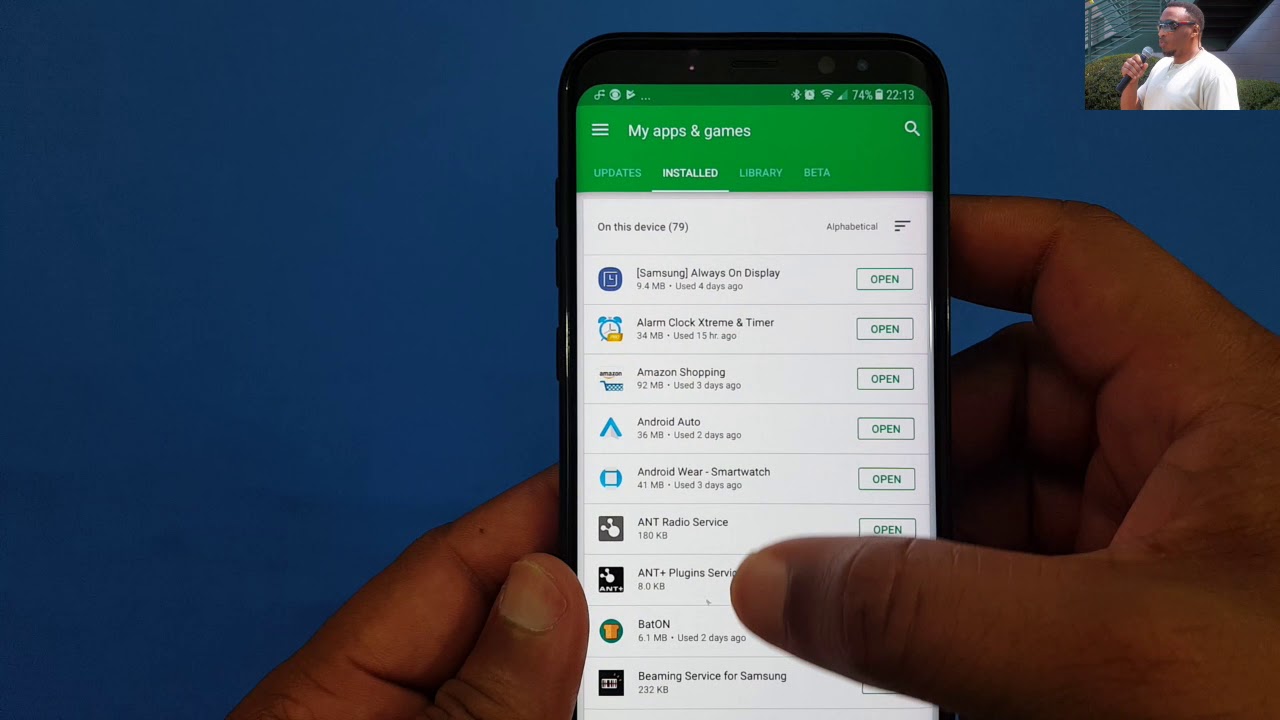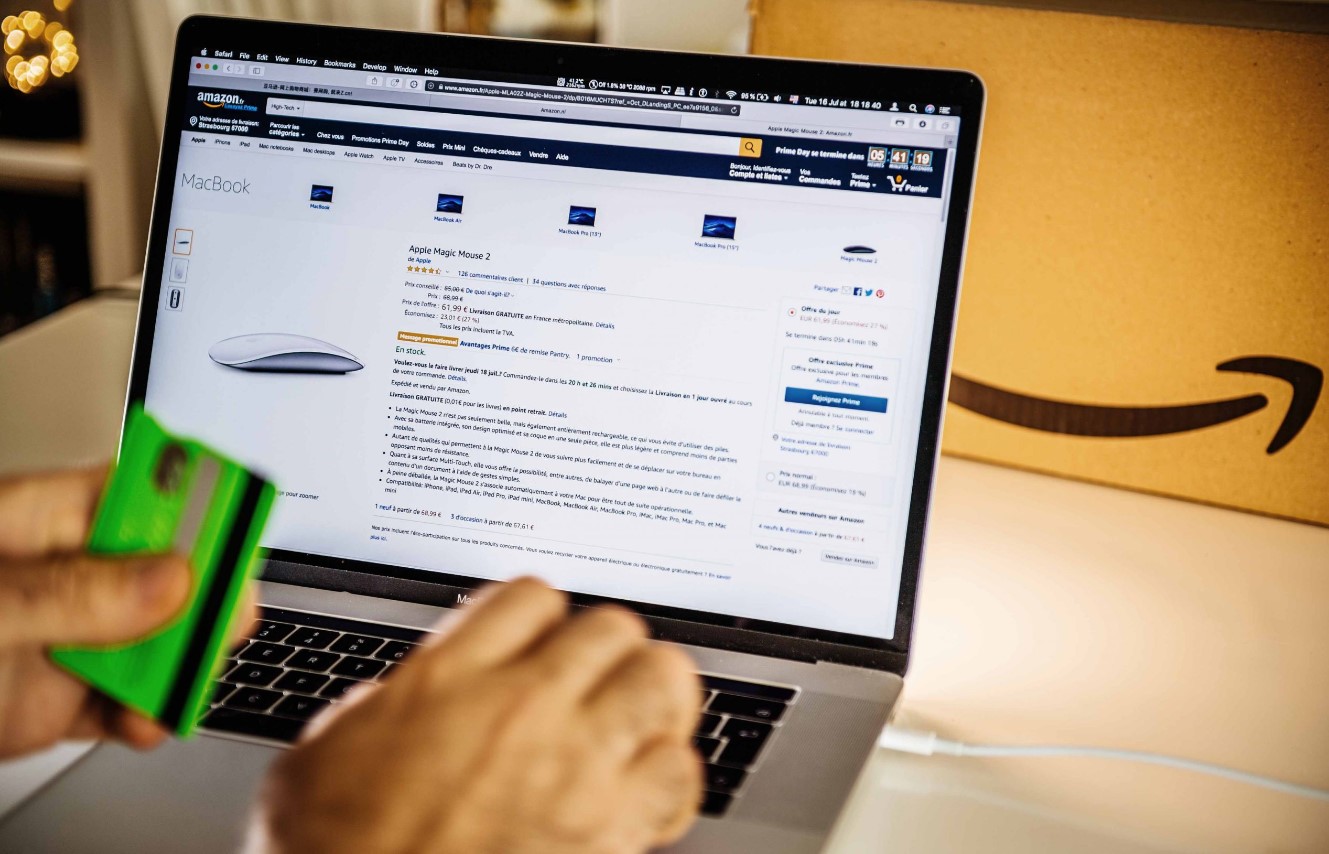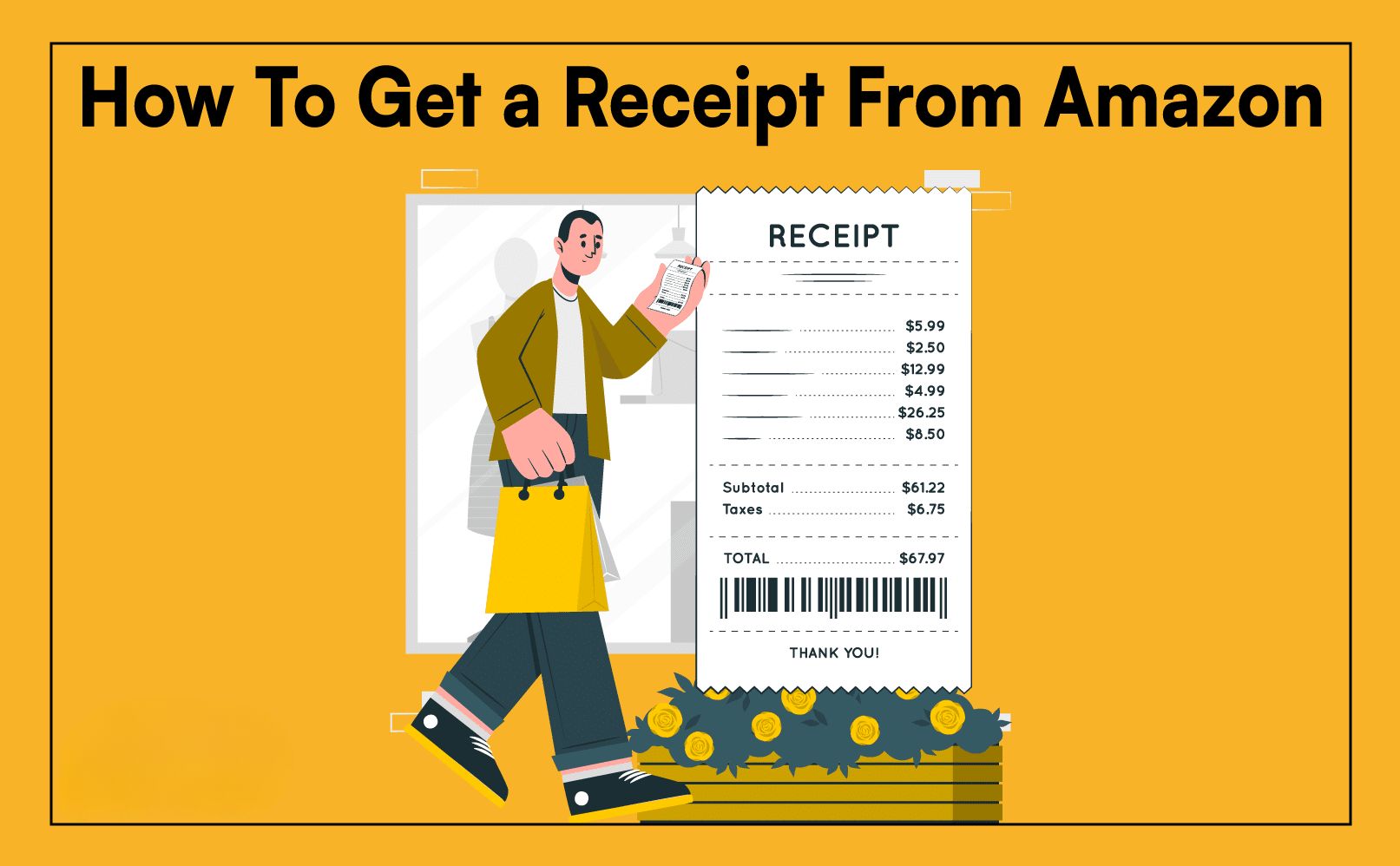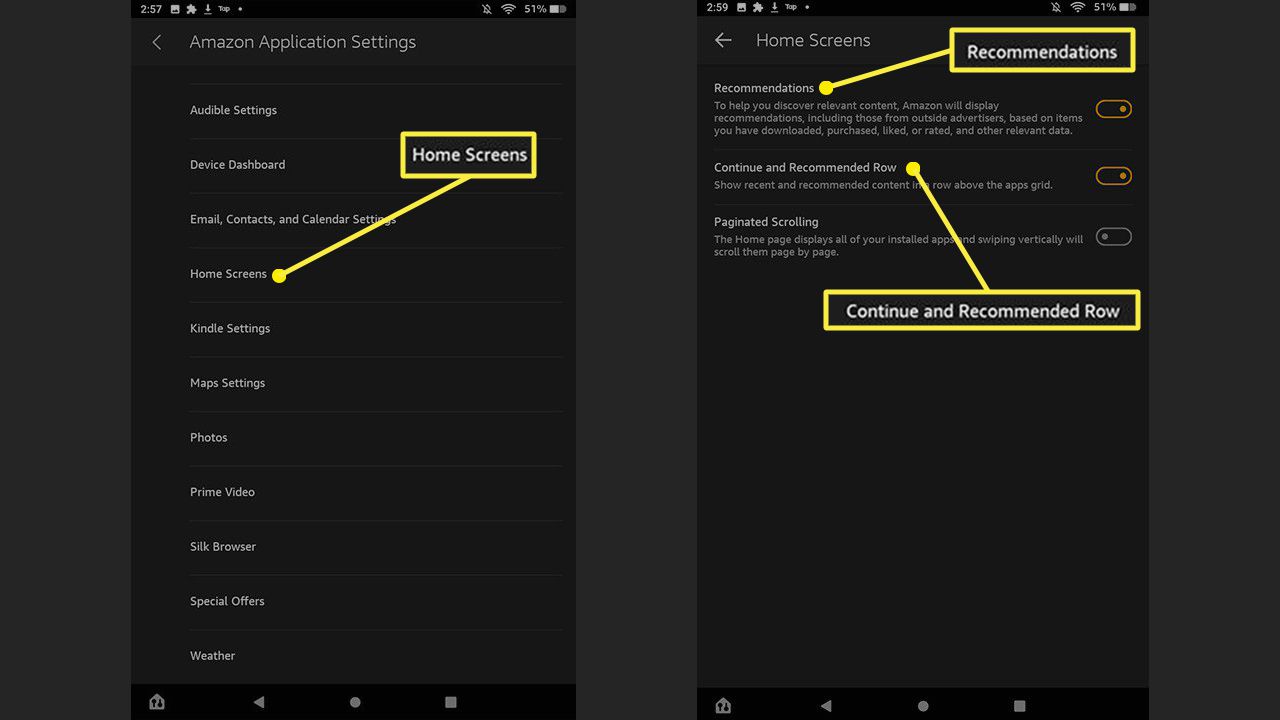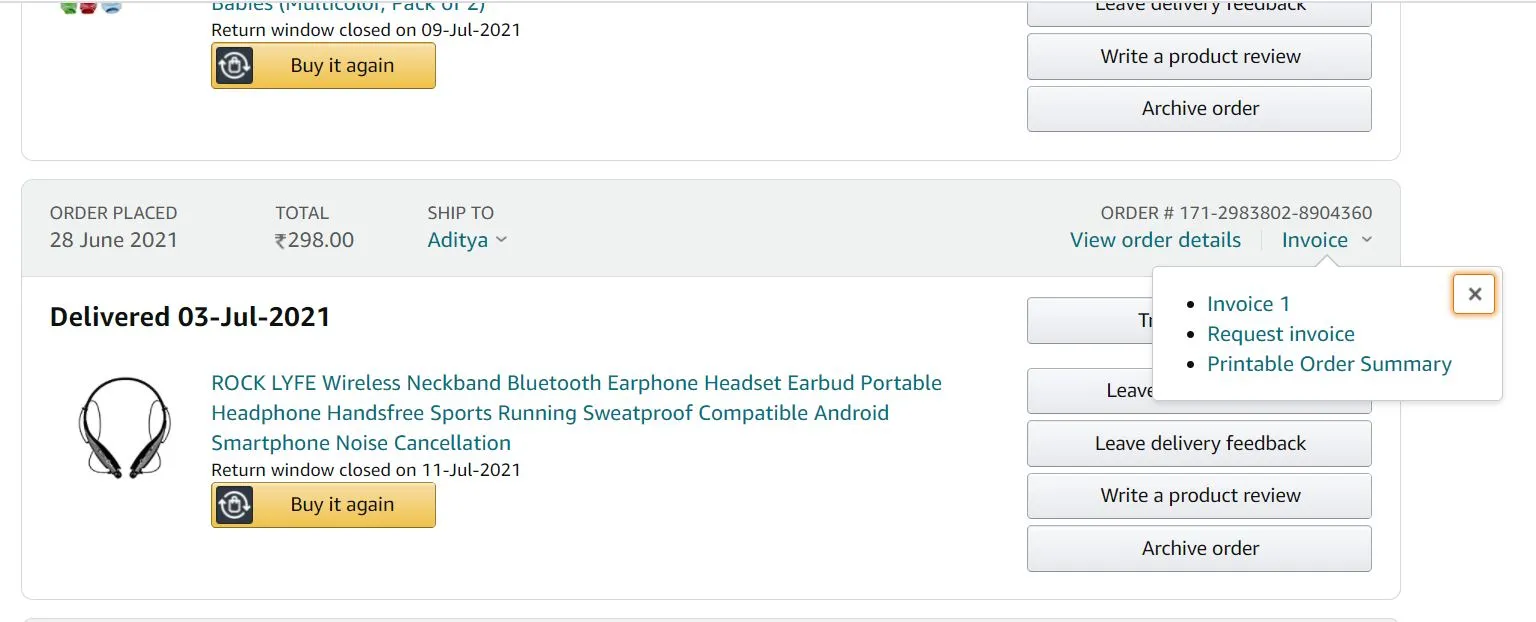Introduction
Downloading your Amazon purchase history is a useful way to keep track of your online shopping activities. Whether you want to review your past purchases, reconcile your expenses, or have a record for tax purposes, having access to this information can be highly beneficial.
In this article, we will guide you through the process of downloading your Amazon purchase history. We will provide step-by-step instructions to ensure that you can easily access and save your order reports.
By following these instructions, you will be able to conveniently obtain a comprehensive record of your Amazon purchases. This can be valuable for various reasons, including tracking expenses, checking for any unauthorized transactions, or simply satisfying your curiosity about your shopping habits.
It’s important to note that you can download your Amazon purchase history reports for any date range, from a few days to several years. The reports are available in either CSV (Comma-Separated Values) or XML (eXtensible Markup Language) format, both of which are commonly used for data analysis and management.
Whether you are a casual Amazon shopper or a frequent buyer, having access to your purchase history is a simple and convenient way to keep tabs on your online purchases. So, let’s get started with the step-by-step process of downloading your Amazon purchase history.
Step 1: Sign in to your Amazon account
The first step to downloading your Amazon purchase history is to sign in to your Amazon account. Open your preferred web browser and go to www.amazon.com. If you don’t already have an account, you’ll need to create one before proceeding.
Once you reach the Amazon homepage, look for the “Sign In” button located at the top right corner of the screen. Click on it to access the sign-in page.
On the sign-in page, enter your Amazon account credentials, which include your email address or mobile number and your password. Double-check the accuracy of the information to ensure that you’re signing in to the correct account.
After entering your login information, click on the “Sign-In” button to proceed. If the credentials are correct, you will be successfully signed in to your Amazon account.
Please note that if you have enabled two-step verification for your Amazon account, you will need to complete the additional verification step, which may involve entering a one-time password sent to your registered email or mobile device.
Once you are signed in to your Amazon account, you can proceed to the next step to download your purchase history.
Step 2: Navigate to the “Your Orders” page
After signing in to your Amazon account, the next step is to navigate to the “Your Orders” page. This page provides you with an overview of all your past purchases on Amazon.
To access the “Your Orders” page, hover over the “Account & Lists” option located at the top right corner of the Amazon homepage. A drop-down menu will appear.
In the drop-down menu, locate and click on the “Your Orders” link. This will direct you to the “Your Orders” page, where you can view all your purchased items and order details.
On the “Your Orders” page, you will see a list of your recent orders, with the most recent orders displayed at the top. If you have made a sizable number of orders, you may need to click on the “See more” button to view additional orders.
At this point, you have successfully reached the “Your Orders” page, and you’re ready to proceed to the next step to download your order reports.
Please note that the availability of your order history may vary depending on your Amazon account settings and the duration for which you have been using Amazon. If you have recently created your account or have not made any purchases, your order history may be limited or empty.
Step 3: Click on “Download Order Reports”
Once you have accessed the “Your Orders” page, the next step is to click on the “Download Order Reports” button. This will allow you to generate and download your purchase history reports in a convenient format.
Scroll down the “Your Orders” page until you find the “Order History Reports” section. In this section, you will see the “Download Order Reports” button, usually located on the right-hand side of the page.
Click on the “Download Order Reports” button to proceed. This will direct you to the order reports download page, where you can customize the specifics of your report.
On the order reports download page, you will find various options to meet your reporting needs. You can choose the report date range, select the report type, and even specify additional report details if necessary.
Ensure that you carefully review all the available options on the download page to select the desired parameters for your report. This step allows you to tailor your report according to your preferences and requirements.
For example, if you only want to download a report for a specific time period, you can set the start and end dates accordingly. This flexibility allows you to focus on a specific timeframe and retrieve the information you need.
Once you have configured the settings for your report, click on the appropriate button, such as “Submit” or “Generate Report,” to initiate the process of generating your order history report.
At this point, you have successfully clicked on the “Download Order Reports” button and have chosen the desired parameters for your report. It’s time to move on to the next step to specify the report type and complete the download process.
Step 4: Choose the desired date range
After clicking on the “Download Order Reports” button and accessing the order reports download page, the next step is to choose the desired date range for your report. By specifying the date range, you can narrow down the information included in your purchase history report.
On the order reports download page, look for the section where you can select the date range. This section may be labeled as “Select Date Range,” “Report Period,” or something similar.
Depending on your preferences, you can choose from options such as “Last 30 days,” “Last 6 months,” or “Custom.” “Custom” allows you to manually enter the start and end dates to specify a specific timeframe for your report.
Select the option that best suits your needs. If you want to download your entire purchase history, choose the “Custom” option and enter the earliest and latest dates available in the date picker.
Consider your purpose for downloading the report and the specific timeframe you want to focus on. For example, if you need the report for auditing purposes or for a particular month, choose the respective date range to retrieve the relevant information.
Ensure that you double-check the selected date range to ensure it accurately reflects the period you are interested in. This will help narrow down the report’s contents and provide you with a more focused view of your purchase history.
Once you have selected the desired date range, proceed to the next step to choose the report type, which determines the format in which your purchase history report will be downloaded.
Step 5: Select the report type (CSV or XML)
After choosing the desired date range for your Amazon purchase history report, the next step is to select the report type. You have the option to choose between two popular formats: CSV (Comma-Separated Values) or XML (eXtensible Markup Language).
On the order reports download page, look for the section that allows you to select the report type. This section may be labeled as “Choose Format,” “Select Report Type,” or similar.
Take a moment to consider how you plan to use the downloaded report. Both CSV and XML formats have their advantages and are commonly used for data analysis and management purposes.
The CSV format is widely supported by spreadsheet software, making it easy to open and manipulate the data in programs like Microsoft Excel or Google Sheets. It presents the information in a tabular format, with each field separated by a comma.
On the other hand, the XML format is a more structured markup language that allows for the inclusion of different types of data. XML files can be processed using various software applications and programming languages, providing flexibility in handling and extracting specific information.
Consider your intended use for the report and the tools or programs you have available. If you are primarily interested in analyzing the data using spreadsheet software, selecting the CSV format would be a suitable choice. If you have more advanced data processing requirements or prefer a structured format, opt for the XML format.
Once you have made your decision, click on the corresponding format option to select it. This will ensure that your purchased history report is downloaded in the chosen format.
Now that you have selected the report type, you are ready to proceed to the next step, which involves requesting the report and waiting for it to be processed.
Step 6: Click on “Request Report”
Once you have chosen the report type for your Amazon purchase history, the next step is to request the report. By initiating the request, you are instructing Amazon to generate and prepare your purchase history report for download.
On the order reports download page, locate the button or link labeled “Request Report” or something similar. This button is typically positioned near the options for selecting the report type and date range.
Take a moment to review your selected options, including the date range and report type, before proceeding. Ensure that everything is in accordance with your preferences and requirements.
When you are ready, click on the “Request Report” button. This action will submit your request to Amazon for processing. Depending on the size of your purchase history and other factors, it may take a few moments for Amazon to generate the report.
While your request is being processed, you may see a loading or processing indicator. It’s important to be patient during this step and avoid refreshing the page or navigating away from the download page.
Once Amazon has successfully generated your purchase history report, you will be able to proceed to the next step to download the report file and access your complete order history.
It’s worth noting that the time taken to process the report may vary depending on factors such as the size of your order history and the current server load. If you have a large number of orders or a lengthy purchase history, it may take a bit longer to generate the report. However, Amazon strives to make this process as efficient as possible.
Now that you have requested the report, patiently wait for the processing to be completed before proceeding to the next step.
Step 7: Wait for the report to be processed
After requesting your Amazon purchase history report, the next step is to wait for the report to be processed. This process involves Amazon generating the report based on your selected date range and report type.
While the report is being processed, it’s important to be patient and avoid navigating away from the download page or refreshing it. The processing time can vary depending on the size of your purchase history and other factors.
During the processing stage, you may see a loading or processing indicator on the download page. This indicates that Amazon is actively working on generating your report.
The amount of time it takes for your report to be processed can range from a few seconds to several minutes, depending on the complexity and size of your order history. Amazon’s systems work diligently to generate the report as quickly as possible.
While waiting, you can use this time to prepare for the final step of the process. Make sure you have enough storage space on your device or computer to download the report file. This will ensure a smooth and successful download once the report is ready.
If you have any concerns about the processing time or encounter any issues during the wait, it’s advisable to reach out to Amazon’s customer support for assistance. They will be able to provide you with more information and help resolve any potential problems.
Once the processing is complete, you will be able to proceed to the final step, which involves downloading the report file and accessing your complete Amazon purchase history.
Now that you have requested the report and understand the need for patience during the processing stage, await the completion of the report generation before moving forward.
Step 8: Download the report file
After the Amazon purchase history report has been processed, the final step is to download the report file itself. This will allow you to access and save your complete purchase history for your records or further analysis.
On the order reports download page, you will see a button or link labeled “Download Report” or something similar. This button is typically displayed once the report has been generated and is ready for download.
Locate the “Download Report” button and click on it to initiate the download process. Depending on your web browser and settings, the report file may begin downloading automatically or prompt you to choose a location to save the file.
When prompted, select a suitable location on your computer or device where you want to save the report file. Consider choosing a location that is easily accessible and organized for future reference.
Keep in mind that the report file may be quite large, especially if you have a significant purchase history. Therefore, ensure that you have sufficient storage space available before initiating the download.
Once the report file has been successfully downloaded, you can open it using the appropriate software or application that supports the chosen report format (CSV or XML). For example, CSV files can be opened with spreadsheet software like Microsoft Excel or Google Sheets.
Upon opening the downloaded report file, you will have access to your complete Amazon purchase history within the specified date range. You can use this information for various purposes, such as financial tracking, expense analysis, or as proof of purchase for warranty purposes.
Remember to keep the downloaded report file in a safe place for future reference. It’s a good practice to regularly download and save updated versions of your Amazon purchase history to maintain accurate records.
With the report file downloaded and accessible, you have successfully completed the process of downloading your Amazon purchase history. Congratulations!
Conclusion
Downloading your Amazon purchase history is a simple and valuable process that allows you to keep track of your online shopping activities. By following the step-by-step instructions provided in this article, you can easily access and save your order reports for future reference.
We began by signing in to your Amazon account, followed by navigating to the “Your Orders” page. From there, we clicked on the “Download Order Reports” button and selected the desired date range for the report. We then chose between the CSV and XML report formats and proceeded to request the report.
After requesting the report, we patiently waited for it to be processed, ensuring that we didn’t navigate away from the download page. Once the report was processed, we clicked on the “Download Report” button and saved the file to our desired location on our device or computer.
With the report file downloaded and accessible, you now have a comprehensive record of your Amazon purchase history within the specified date range. This information can be used for financial tracking, expense analysis, or as proof of purchase when needed.
Remember to regularly download and save updated versions of your purchase history to maintain accurate records. By doing so, you can have a clear overview of your online shopping activities and make informed decisions about your future purchases.
Thank you for following this step-by-step guide. Happy browsing and shopping on Amazon!









